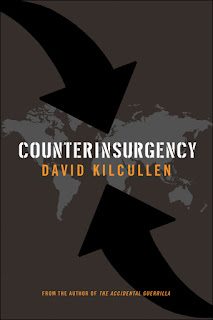Author: Peter Whitewood
ISBN: 978-0-7006-2117-0
Publisher: University of Kansas Press
Year: 2015
Hardcover
Pages: 360
Photos/Maps: 0
The Great Terror of 1937-1938 that resulted in the
decimation of the Red Army’s Officer corps at the hands of their own
government, has remained an enigma in the years following; why would Stalin
undertake this action when he strongly suspected war was imminent? Popular
conception has it that the German’s, in an unprecedented intelligence coup,
planted material that implicated the Red Army leadership in subversive activity
and therefore initiated the purge. Whitewood’s research shows that, while
threat of foreign subversion was definitely a factor on the purge, the seeds
had been planted long before, in the decades following the Russian revolution. Whitewood
has drawn upon previously classified records to shed light upon the events and
activities that set the stage for one of the greatest acts of self-mutilation
that a nation has undertaken in recent history.
The author traces the civil-military relationship in the nascent
Soviet Union throughout the 20’s and 30’s. His research is comprehensive and
in-depth and shows a difficult and, at times, challenging interaction between the
two entities. Policies such as collectivization of the agriculture industry in
the 1920’s stressed the Army as a majority of its soldiers were from farming
communities. Additionally, the necessity to integrate former ‘White” specialist
officers into its ranks following the civil war left a lingering concern
regarding loyalty; moreover, the stresses within the Soviet hierarchy between
the Trotsky and Stalin camps left those officers who had been supporters of
Trotsky with black marks against them. Finally, the lingering discomfort of the
Soviet government, built upon a foundation of communism which eschewed a
professional army, with the necessary evil (in their eyes) of maintaining a
military capability consistently underlined and always coloured the
relationship.
A perfect storm developed for the Red Army as a government,
rife with insecurity, built upon a structure that promoted interdepartmental
rivalry, in an international political environment which exacerbated internal
tensions and fears of espionage was led by a brutally ‘real politique’ leader
who ruled with no checks or balances upon his power. Whitewood shows that
perception became reality and a government, already predisposed to find
disloyalty, was able to prove their suspicions through the use of torture to elicit
confessions, build cases based upon guilt by association and a legal system
which rubber-stamped convictions. These stressors built over the decades
leading up to 1937 saw minor purges and low level sweeps of the military until
finally exploding in a flurry of denunciations, convictions, executions and imprisonment
of literally thousands of officers on the flimsiest of evidence.
Whitewood’s book is an excellent analysis of the events and
environment within the Red Army and Soviet government during this period. It seems
incredible that the military hierarchy would allow itself to be decimated as it
was with such acquiescence. I have issue with only two aspects of Whitewood’s
excellent book. First, I feel that it would have been beneficial to have had more
discussion on the response of the senior levels within the Red Army as things degenerated
for them. Individuals such as Tukhashevsky, Uborevich and Iakir must have been
aware of the environment given their high rank and yet Whitewood does not
discuss their responses or actions to try and counter the allegations being leveled
against them. Additionally, the author does not emphasize, as a possible motive,
the ongoing competition for influence and power between the Army and the NKVD.
This had to be a driving force in the aggressive and brutal means by which
senior officers in the Army were sacrificed.



